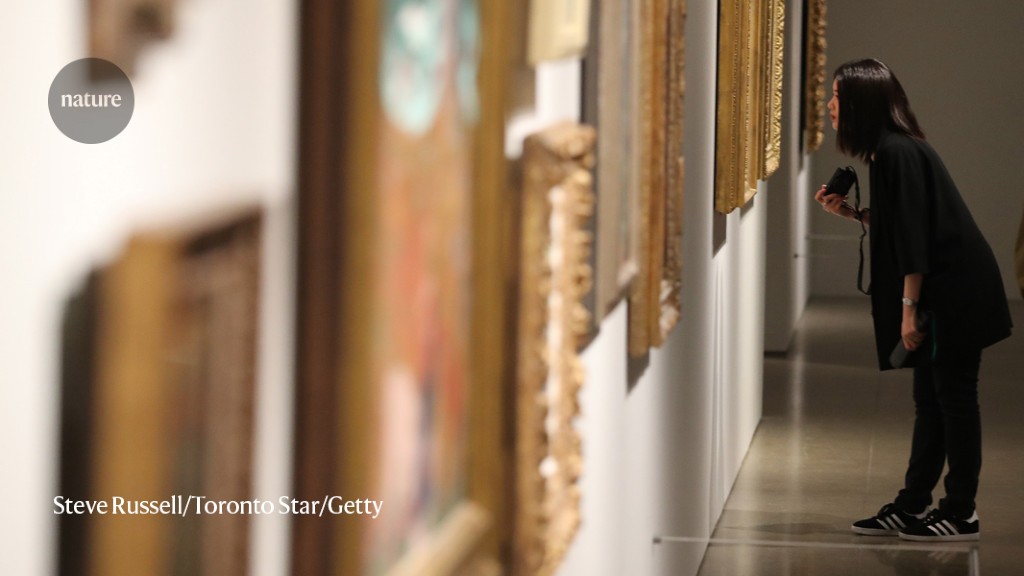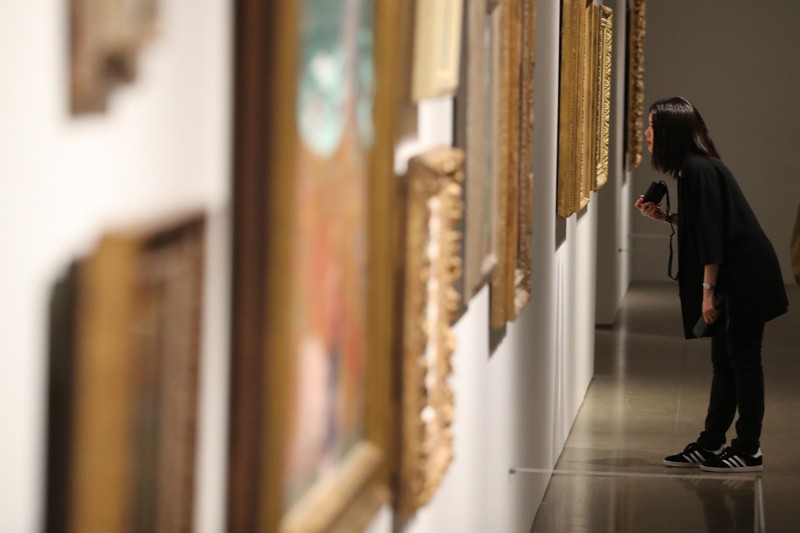Radiocarbon dating has unmasked two forged paintings in France — probably the first time the technique has been used in a police investigation. The paintings were supposedly impressionist and pointillist works from around the early twentieth century. But a team led by heritage scientist Lucile Beck at the University of Paris-Saclay used radiocarbon levels in the fibres of their canvases to date them to sometime within the past 70 years. The researchers concluded that the paintings are modern forgeries in a 4 February report published in Forensic Science International1.
The use of radiocarbon dating is gaining steam in the forensic analysis of artwork, thanks to advances that require smaller samples than ever before. Removing tinier samples from artwork is more palatable to auction houses, museums and owners of paintings. If there is a chance a painting is genuine — and therefore valuable — they don’t want the collection of larger samples to damage it, says art historian Anna Tummers at Leiden University in the Netherlands, who was not part of the new research.
The technique’s success might persuade more of the art world to seek radiocarbon dates, which can more definitively pinpoint when a painting was made, Tummers says. Researchers typically use imaging and chemical analysis to sniff out art forgeries. These methods can peer beneath brushstrokes and see how a painting’s materials have aged, but can’t conclusively nail down a painting’s date.
The consequences of faked artwork extend beyond forgers lining their pockets in the global art market, which moves tens of billions of dollars every year. Forgeries pollute people’s understanding of artworks’ meaning, Tummers says. “If we don’t weed them out carefully, it might really distort our understanding of our own heritage and our own history.”
Suspected forgeries
The two paintings were part of a trove of artwork that French investigators uncovered in a restorer’s workshop in 2019. Of some 600 paintings, dozens appeared to be mid-level masterpieces from the late nineteenth and early twentieth century. But experts questioned the works’ authenticity because the paint seemed relatively fresh.
To investigate the potential forgeries, the French government’s Central Office for the Fight against Illicit Trafficking in Cultural Property (OCBC) called on Beck. When she walked into the OCBC office, she was amused to see what would normally be a drab office with paintings displayed across its floor and tables.
Beck’s team selected a few works, including an impressionist garden scene and a pointillist port landscape, to test. In the office, the researchers used scalpels to remove samples including a small bit of fibre from the canvases.
All living things take in carbon, including radioactive carbon-14, from the atmosphere and from food. When a plant — such as linen or hemp, commonly used to make canvas — dies, the carbon-14 that it incorporated continues to decay. Radiocarbon dating measures what’s left to estimate the time that’s passed, says Mariaelena Fedi, a physicist at the National Institute for Nuclear Physics in Florence. The technique gives an absolute earliest date of an artwork, because there could be years between harvesting linen for a canvas and making the painting.
Atomic-bomb testing, which began in the 1940s and took off in the 1950s, bumped up the amount of carbon-14 in the atmosphere beyond naturally produced levels. Carbon-14 peaked around 1964 and tailed off after a partial ban on nuclear tests. Researchers can easily identify materials containing modern bomb-derived radiocarbon because their carbon-14 concentrations are higher than pre-1950s levels.
Beck’s team tested its samples to see whether they bore the signature of that bomb-derived radioactive carbon-14. In the laboratory, the researchers cleaned and dried the material, whittling down several milligrams into around one milligram of carbon that was pressed into a graphite puck to be measured with accelerator mass spectrometry.
The canvas fibres from both the impressionist and pointillist paintings clearly contained carbon from either the mid-1950s or after the year 2000, the researchers reported. (This is because the carbon-14 concentrations they measured could correspond to either side of the atomic bomb peak.) Another fibre, plucked from the varnish of the pointillist painting and perhaps coming from a brush, also dated to after 1950. Beck acknowledges that, ideally, the team would do further chemical analysis to support its findings, but the researchers were limited by the tight time frame of the investigation.
Advances in the field
Although this seems to be the first report of using radiocarbon dating to identify faked artwork in a police investigation, researchers have been laying the groundwork for the past decade.
Fedi and her colleagues made the first report of radiocarbon dating to detect a forged painting in the Peggy Guggenheim Collection in Venice, Italy, in 2014. The team collected snippets of the canvas and dated them to after the presumed artist’s death — concluding that the painting had been forged2.
In 2019, Laura Hendriks and colleagues used a known forgery of a village scene to test a radiocarbon dating method that used a much smaller sample size than previous techniques. Hendriks, a chemist at the University of Applied Sciences and Arts of Western Switzerland in Fribourg, converted a sample of the scene’s oil paint to carbon-dioxide gas before introducing it to the mass spectrometer. The team was able to date the forgery using only micrograms collected from the painting3. The tiny sample was “just a few crumbs of dust, basically”, Hendriks says.
Such advances are good news for the field. There’s a huge need for objective tools to suss out fakes, Fedi says, and radiocarbon dating is excellent when combined with other methods and the expertise of art scholars who can help to interpret the history of these complex objects.








More News
Could bird flu in cows lead to a human outbreak? Slow response worries scientists
US halts funding to controversial virus-hunting group: what researchers think
How high-fat diets feed breast cancer